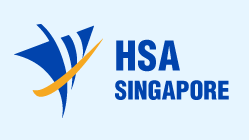The article describes in detail the aspects related to the delivery, installation, and servicing of medical devices and key points to be considered in this respect.

Table of Contents
The Health Sciences Authority (HSA), Singapore’s regulatory agency in the sphere of healthcare products, has published a guidance document dedicated to the application of Singapore Standard Good Distribution Practice for medical devices. The document outlines the main principles to be followed by the parties involved in operations with medical devices allowed for marketing and use in the country to ensure they retain their safety- and performance-related characteristics within the whole period of their useful life. The guidance provides non-binding recommendations to be followed, as well as clarifications based on the applicable regulations. It is important to mention that provisions of the guidance are non-binding, and should not be considered as the ones introducing new rules or imposing new obligations beyond the ones established by the existing legislation.
Delivery of Medical Devices
First of all, the authority mentions that there should be an appropriate documented policy describing the particular way medical devices should be delivered from their point of release to their point of delivery to ensure their continued safety and proper functioning. The authority also emphasizes the importance of the transportation stage as during it medical devices could be subject to the impact of various external factors that could potentially affect their integrity and quality. In this respect, the authority mentions that medical devices should not be stored in vehicles – the appropriate premises should be used instead. It is stated that medical devices should be supplied to the designated party only; deliveries should be made only to licensed wholesalers or distributors/persons authorized to supply medical devices. As it is further mentioned by the HSA, special considerations should be taken into account concerning devices subject to cold chain management (e.g., temperature control and tracking during transportation).
Additional Activities
The scope of the document covers other types of activities related to medical devices including, inter alia, installation, servicing, calibration, and disposal. According to the document, the installation of a medical device should be performed strictly by the respective instructions and written procedures to be provided by the manufacturer to ensure the product will later operate safely and efficiently. Moreover, such operations should be carried out by persons having the necessary qualification and training. The appropriate instructions should also be followed in a letter concerning servicing activities, such as repair and maintenance.
If the device in question has a measuring function, it should be duly calibrated by the instructions to be provided by the manufacturer to ensure the device operates as intended and the measuring results it provides are accurate and reliable. The authority also mentions that the results of calibration should be duly recorded and retained for further reference.
Return of Medical Devices
The document pays special attention to the way returned medical devices should be treated. In this respect, it is stated that any product returned to the organization should be treated as a nonconforming product until the assessment of disposition has been determined. As was mentioned before, such products should be stored separately to prevent mix-ups with devices of the proper quality. Before being released again to saleable stock, returned products should undergo the appropriate re-evaluation to be performed. For this purpose, an assessment should be carried out, taking into account the nature of the products, the conditions they require, as well as the period elapsed from the date they were initially distributed. The authority also encourages requesting advice from the medical device manufacturer in case of any concerns. According to the guidance, additional aspects to be considered shall include:
- Medical devices are in their original unopened containers and good condition;
- Medical devices have been stored and handled under proper conditions; and
- The remaining projected useful life of the medical devices is acceptable to the customer.
The last point is important since as it was explained earlier by the HSA, medical devices for which the projected useful life has expired or is close to expiration should not be distributed.
Once it is determined that the medical device is suitable for being supplied, it should be entered into the stock rotation system to ensure its traceability.
Disposal of Medical Devices
The guidance also describes the approach to be applied concerning the products that no longer meet the respective specifications – according to the document, they should be properly disposed of. This applies, for example, to medical devices that are expired, contaminated, damaged, or defective. An organization conducting operations with medical devices should duly develop and implement efficient controls ensuring such devices would not be distributed but will be disposed of by the instructions provided by the manufacturer. In certain cases, medical devices should be returned to the initial manufacturer, while the latter will be responsible for their disposal or other actions these products should be subject to.
In summary, the present guidance describes the aspects to be taken into consideration concerning the delivery of medical devices and their installation before they will be ready to be used for the intended purpose. The scope of the document also covers additional activities related to medical devices, such as servicing, calibration, and disposal. By virtue of the guidance, the authority also explains the approach to be applied concerning returned medical devices and outlines the conditions under which they can be supplied.
Sources:
How Can RegDesk Help?
RegDesk is a next-generation web-based software for medical device and IVD companies. Our cutting-edge platform uses machine learning to provide regulatory intelligence, application preparation, submission, and approvals management globally. Our clients also have access to our network of over 4000 compliance experts worldwide to obtain verification on critical questions. Applications that normally take 6 months to prepare can now be prepared within 6 days using RegDesk Dash(TM). Global expansion has never been this simple.
Want to know more about our solutions? Speak to a RegDesk Expert today!



